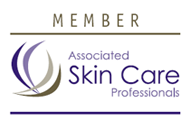Dermaplaning
What is Dermaplaning?
Dermaplaning is a form of manual exfoliation similar in theory to microdermabrasion but without the use of suction or abrasive crystals. An esthetician grade, sterile blade is stroked along the skin at an angle to gently “shave off” dead skin cells from the epidermis. Dermaplaning also temporarily removes the fine vellus hair of the face, leaving a very smooth surface.
As with any type of exfoliation, the removal of dead skin cells allows home care products to be more effective, reduces the appearance of fine lines, evens skin tone and assists in reducing milia, blackheads, and minor breakouts associated with congested pores.
Dermaplaning can be an effective exfoliation method for clients that have sensitive skin or allergies that prevent the use of microdermabrasion or chemical peels.
Due to the contours of the face, certain areas of the face (such as the eyelids and nose) are not treatable using this method.
During and after your treatment?
I will review your current daily regimen and skin care products, advise you on which products you should continue to use, and recommend any additional products or changes to your regimen to enhance your desired outcome.
After the treatment calming and hydrating products will be applied but you still may experience excessive dryness or even some peeling between sessions.
More sensitive skin may experience some redness after the first couple of sessions. This normally goes away after 2 to 3 hours. Dermaplaning may cause minor superficial abrasions which may not appear until a day or two following your treatment.
After Care
- Aerobic exercise or vigorous physical activity should be avoided for 48 hours or until all redness has subsided.
- Avoid direct sunlight and tanning beds for 5 days.
- Sunscreen must be applied daily to the treated area for a minimum of two weeks.
- Use products that are calming and do not use anything with exfoliation for 3 days.
Contraindications
- Active infection of any type, such as herpes simplex or flat warts.
- Chemotherapy or radiation
- Eczema or dermatitis
- Family history of hypertrophic scarring or keloid formation
- Oral blood thinner medications
- Rosacea
- Skin Cancer
- Sunburn
- Uncontrolled diabetes
Please feel free to contact me with any questions.



